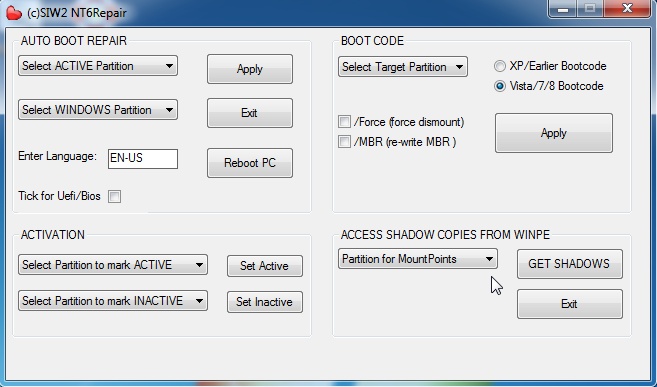New
#11
Thanks Mahmoud. We have greatly benefitted from EasyBCD here since before Win7 was even released and have long helped establish it as a consumer multi-boot Best Practice with Windows and Linux. I was only referring to paid boot CD's not taking precedence over the Win7 disk and System Repair Disk for repairs to the OS.
Since you're finally here (we mainly hear about you from our teacher SIW2) may I ask that you look at the Easy "Change Boot Drive" function described in Wolfgang's tutorial Bootmgr - Move to C:\ with EasyBCD which is often linked here but doesn't quite do the job that Startup Repair - Run up to 3 Separate Times does after confirming the Active partition.
The problem is that WinRE's link is not rewritten to System Recovery Options as it will eventually be with 3 Startup Repairs. It's for this reason we've stuck with the cumbersome 3x regimen for years here to do the job most completely. Maybe your engineers can close that gap in the "Change Boot Drive" function since moving the boot files while leaving a consumer's onboard WInRE out cannot really be a Best Practice.


 Quote
Quote